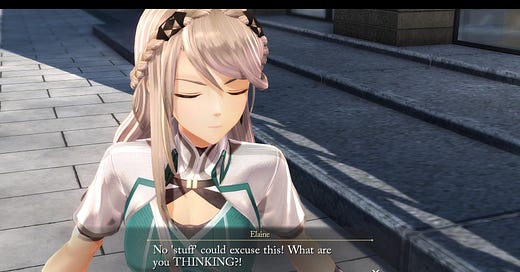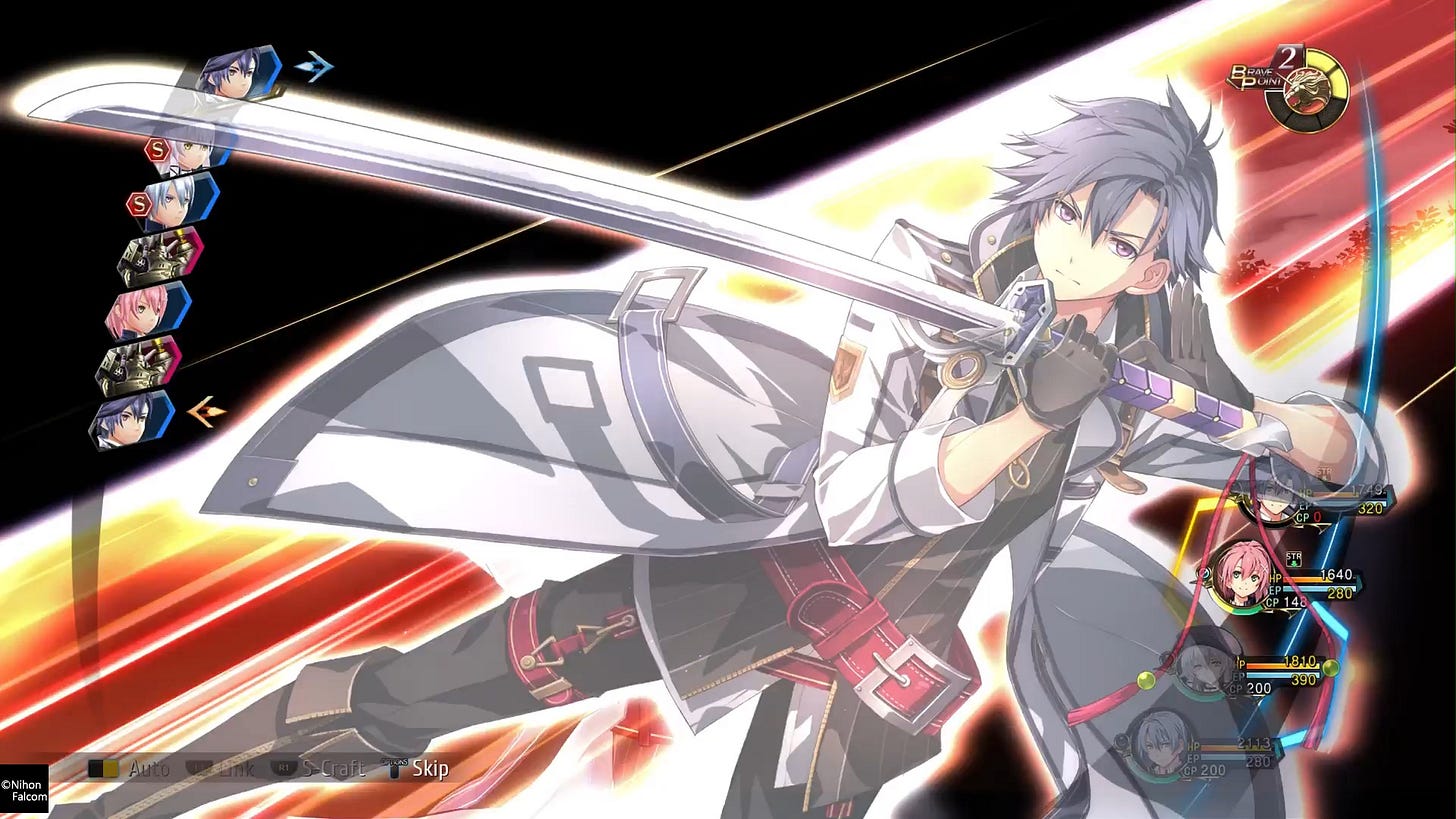Trails Through Daybreak still misses something
Keeping the identity of the game goes beyond using recurring characters.
My progress in Trails Through Daybreak is happening. In a steady rhythm like my father's slow dragging steps, but it's happening. Maybe not as fast as I wanted considering the demo for Daybreak II is out already. But just like my father, I'm eventually reaching my destination.
I'm in Chapter 2, learning about the streets and neighbourhoods Heiyue controls; running after the energetic Aaron; playing cards with characters I met a long time ago, figures who were at that time unknown faces behind a door. Again Falcom impresses me with its ability to create a living world where we can to some extent experience the culture of the place from beliefs and art to food.
The slow pace of my journey gives room for periods of rumination, of careful examination of feelings and impressions of the sections I've played. It's beautiful to look at Aaron and realize how well-made the texture of his jacket is. The guitar of tracks like "Be Prepared” and “Wild Beat” carries the novelty and its melody but keeps the identity of songs I have listened to while facing unforgettable battles in older games.
Revisiting in my mind on what I have seen in the game helped me understand what I like, but also what I don't. I could see how much Daybreak offers, but I couldn't help but feel it was missing something. The answer came when I could finally play with Elaine.
One of the pleasures I have always found in any Trails games is to, whenever a new character enters the party, try their S-Craft. Their ultimate attacks aren't only meant to show big numbers on the screen. They must give form to that character's fight style, mannerisms, and identity, aspects which are usually oversimplified in most in-game scenes. But once we hit the hotkey for the S-Craft, the magic happens. But not completely in Daybreak.
Once I was fighting alongside Elaine in Chapter 2, I promptly managed my turns, S-Boost stacks, and CP to cast her S-Craft, Knights of Asteria. The short sequence starts, Elaine holding her sword in front of her face. Blue-hued shining wings appear on her back. She dashes forward, zipping through enemies. Flashes of her sword all over the place. The camera focuses back on her, while she charges the final blow, a thrust attack followed by the utterance of the attack's name.
The scene is charming, making Elaine a sort of valkyrie whose martial prowess comes from her speed. A fighting style that mixes deadly slashes with quick sequences of thrust attacks. Stunning! After seeing it for the first time, I couldn't ignore that it didn't feel right. Like a coffee with too much milk, or fries lacking a bit of salt, it was possible to enjoy, although never meeting its full potential. The second time I watched the S-Craft animation, it finally clicked for me. I knew what it missed! Elaine was missing!
What I mean is that the gorgeous art of the character, a beautifully drawn portrait of them in a special pose that would appear at the climax of the attack, was missing. They became a thing during the Cold Steel series, but since the Trails in the Sky games, an illustration (or part of it) appears on the screen. This decision might have been made to make the S-Crafts more visually appealing in the first games, but this small touch became a kind of signature of Trails games, part of the game's identity.
Focusing only on showing the character's model performing the special move makes sense when trying to prove the technological progress made. At the same time, it loses a little bit of coherence with the rest of the work. Falcom cares about making an intricate universe of symbols, narratives, and characters, and I believe they should keep with the distinct visual language that constituted the games in the series so far.
Recurring themes and symbols give coherence and a sense of familiarity that includes a piece of work within a larger project. Dragon Quest, Final Fantasy, and Persona games are all series which kept unique symbolic elements to connect one title to another. From the recurrent enemies to the idea of a room where a well-known character meets the protagonist, all of them have something that indicates their condition as one among others.
The absence of portraits is not a catastrophic decision by any means. It is, however, a lost opportunity for Falcom to make the charismatic roster of characters in Daybreak become even more likeable. Whether it was seeing only the eyes of the character in Trails in the Sky, half of their bodies in from Zero and Azure, or their complete body in a cool pose in Cold Steel and Reverie, their manifestation was a communion between us players and that character. A brief moment when we can look at them in a way we rarely do. This reminds me of a passage in Susan Sontag's essay America, Seen Through Photographs, Darkly where she is discussing Diane Arbus’ photographs and the act of posing for someone's gaze. She says that "to get these people to pose, the photographer has had to gain their confidence, has had to become 'friend’ with them.”
In Daybreak we lose this moment of intimacy. What we get is a spectacle, a performance – a beautiful one, sure but empty in emotion, leaving the experience feeling distant. We lost the confidentiality that a giant image of Oliver holding a rose and pointing this orbal pistol establishes with the player.
I'm still enjoying Trails Through Daybreak a lot.







